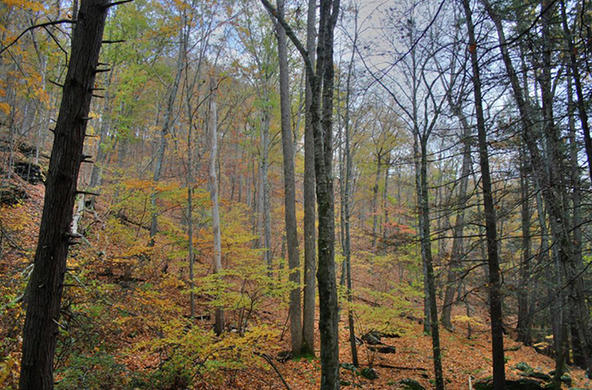If you’ve walked much along the Hudson’s shores, you’ve probably seen thorny, black water-chestnut seedpods piled up along the high-tide line, thick stands of common reed in wetlands and along the railroad tracks, mute swans gliding across the water, carp splashing in the shallows, chunky shells of Atlantic rangia on the beaches of Haverstraw Bay, and the thin, sharp shells of zebra mussels littering shorelines from Newburgh north. All of these species are alien species (they were brought here by humans, either deliberately or accidentally) that did not live in the Hudson when Henry first sailed up the river. All of these species probably have strong effects on other species of plants and animals. Our research group at the Institute of Ecosystem Studies has documented dramatic effects from the zebra mussel invasion on the Hudson.
Zebra mussels are small (less than 4 cm long), black-and-white striped bivalves that attach tenaciously to solid objects (stones, bricks, shells, wood, plants, and boat hulls!) below the water line in fresh or slightly brackish water. The adults are filter-feeders, eating phytoplankton, small zooplankton, large bacteria, and organic detritus. During the summer, the adults release huge numbers of eggs and sperm (one female may make a million eggs each year) into the water, which develop into free-swimming larvae. The larvae spend a few weeks in the water, going wherever the water goes. If the larvae get enough to eat and aren’t eaten by a predator, they settle down onto a solid object and grow into adults. They’re mature in just one year, and may live for four to six years.
Zebra mussels are native to southeastern Europe, but spread into western Europe when canals were built linking Europe’s waterways in the early 19th century. In about 1985, they hitched a ride to Detroit in the ballast water of an ocean-going ship. Since then, they’ve spread to rivers and lakes between Quebec, Minnesota, and New Orleans. They appeared in the Hudson in 1991, and are common everywhere in the estuary between Troy and the Highlands.
Since September 1992, the Hudson’s zebra mussel population has been huge (50 – 600 billion animals). The weight of zebra mussels is greater than the combined weight of all other fish, zooplankton, shellfish, worms, and bacteria in the Hudson. During the summer, zebra mussels filter an amount of water equal to all of the water in the Hudson between Troy and Newburgh every one to four days. Zebra mussels are efficient filter-feeders, so it isn’t surprising that their activities have caused some big changes in the Hudson’s ecosystem. Biomass of phytoplankton, which forms an important foundation for the food web, has fallen by 80% since the zebra mussel invasion. Likewise, zooplankton small enough to be eaten by zebra mussels (such as rotifers) have nearly disappeared from the river. Of course, animals that depend on phytoplankton and small zooplankton for their food have suffered badly from the zebra mussel invasion. Populations of crustacean zooplankton, a key food for many young fish, have been cut in half by the zebra mussel invasion. The Hudson used to contain more than a billion animals of native pearly mussels between Troy and Poughkeepsie, but these interesting animals may disappear entirely from the Hudson in the coming years.
Because zebra mussels have removed most of the phytoplankton from the Hudson, the river is about 50% clearer than it used to be. This increase in water clarity may have caused beds of submerged plants (water-celery) to spread and thicken, leading to an increase in populations of invertebrates that shelter and feed in these plant beds. We are now working with DEC fisheries biologists to determine how the zebra mussel invasion changed fish populations in the Hudson. It appears that the zebra mussel invasion has reduced both populations and growth rates of open-water fish (such as shad and herrings), while those of shallow-water fish (such as sunfish) have increased. Further, it looks like fish have shifted their distributions within the river. The overall impact of zebra mussels on the Hudson’s fish has probably been negative. In sum, the Hudson of 2003 is a vastly different river than it was before the zebra mussel invasion.
In addition to causing these ecological changes, zebra mussels are an economic nuisance in the Hudson. Because they will settle anywhere that untreated Hudson River water goes, they foul pipes, boat hulls and fittings, and other underwater structures. This has led to increased costs for underwater inspections, cleaning, and chemical control, especially in drinking-water intakes and power plants.
What can we do to control zebra mussels in the Hudson? While zebra mussels can be controlled on boat hulls and in power plants by mechanical scraping or chemicals, there is no prospect for controlling zebra mussels in open ecosystems like the Hudson. Predators like blue crabs and sturgeons do eat zebra mussels, but have never been shown to control natural populations. Research on new control measures, including biological controls, is ongoing, but the changes we’ve seen to the Hudson’s ecosystem probably are irreversible or at least long-lasting.
A more useful question than “what can we do to control zebra mussels in the Hudson?” is “What can we do to prevent more alien species from establishing themselves in the Hudson and other ecosystems?” First, we can try not to spread zebra mussels from infested waters like the Hudson into uninfested waters by not taking raw water (in minnow buckets, live wells, and the like) or infested gear (boats and trailers) from the Hudson to other lakes and rivers. Be sure your boat and trailer are really clean before moving them from the Hudson to another lake or river. Recommendations for cleaning are available at Sea Grant. Second, we can try not to bring additional alien species into North America by pushing for better laws to restrict entry of new species in ballast water, shipping containers, and the pet, aquaculture, and horticulture industries, and by being careful not to release our alien pets and baitfish into rivers and lakes. It is through measures like these, which slow the entry of new alien species, that we can prevent the occurrence of unpleasant surprises like the zebra mussel invasion in the future.








